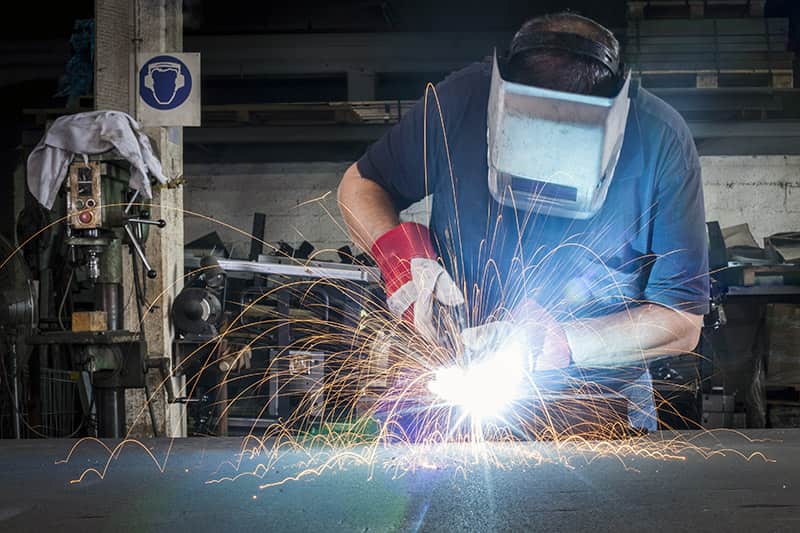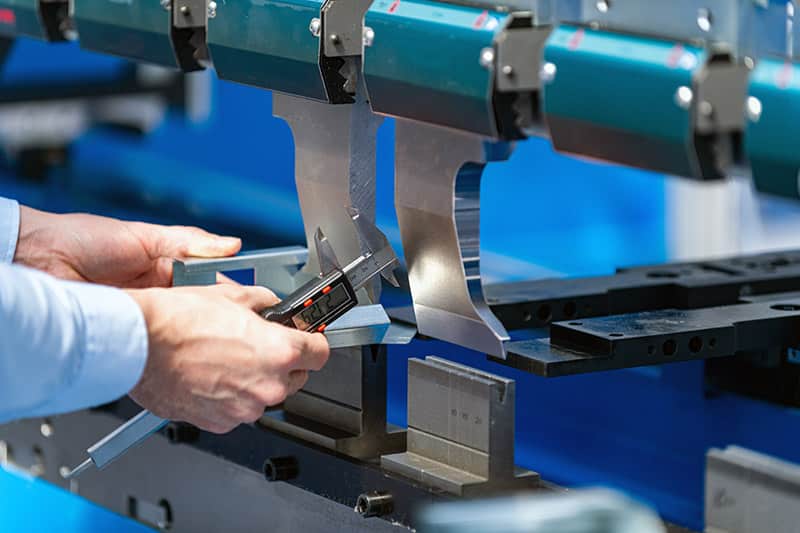Intro
Working with sheet metal is common in most machine shops. If you want a sheet metal piece to be fabricated, there are a few methods to choose from. The following sections will outline 7 of the most common fabrication methods for sheet metal along with a description of what it is and how it works.
#1: Cutting
Perhaps the most common form of sheet metal fabrication is cutting. This is a general function that simply reduces the overall size of the sheet.
How that’s achieved depends on the type, thickness, and application of the metal.
It can be done with a saw, shear, torch, water cutter, or plasma cutter.
Other times, a large piece of sheet metal is simply cut into smaller, more manageable pieces so that other fabrication methods can be used.
#2: Machining
Machining is another common style when it comes to fabricating with sheet metal. Often, this is done with a mill or drill.
The key difference between machining and cutting is that a machine is much more precise, accurate, and repeatable. A mill can cut complex features and geometries into a piece of sheet metal.
A machine shop can use the same machinery to work on sheet metal as it does to work on thicker metals.
#3: Welding

Welding is used to permanently affix two pieces or faces of sheet metal together. If you were to make the letter “T” with two pieces of sheet metal, you could weld along the intersection to bond the two pieces together.
It works by getting a thin rod of material very hot and melting it between the intersection of the two pieces. When the melted material cools and hardens, it bonds the two pieces together.
You’ll be left with a seam at the intersection of the sheet metal when you’re done welding.
This form of fabrication can be thought of like adhering pieces together, but it’s much stronger and more resilient than using adhesives.
#4: Punching
If you want multiple, nearly-identical cuts of sheet metal, then you’ll probably choose punching.
This is done on a press. The sheet metal will be sandwiched between a metal die and a flat table. The metal die acts like a sharpened cookie cutter that goes through the sheet metal.
After it’s pressed, you’ll be left with a cut-out piece of sheet metal that is the correct geometry.
The beauty of punching is that the operation can be done repeatedly, and each punched piece is almost identical dimensionally.
#5: Stamping
A process that’s similar to punching is stamping. The key difference is that when sheet metal gets stamped, material is not being cut out. Rather, areas are being raised or lowered without penetrating the sheet metal.
Typically, you’ll find that stamping is used to emboss letters or shapes onto a piece of sheet metal. If you want to mark your final product with a name, serial number, or some form of identification, stamping is a viable option to consider.
As opposed to labeling or writing on the piece, a stamped indicator won’t fade over time.
#6: Folding or Bending

Folding or bending is a sheet metal fabrication method that changes the overall shape of the flat sheet metal.
The piece of sheet metal is bent to a certain angle, and a single piece can be bent multiple times. The difficult part is designing the part. The engineer will need to convert the bent part into a flat layout with indication lines as to where the bends should be done.
With the correct flat layout, you can quickly bend a 5-sided box or create a wing on your product.
#7: Post Processing
Once the part is fully fabricated, there are a number of steps that can be done to further enhance the product. These are called “post-processing” steps because they’re performed after all the cuts, bends, and welds are completed.
Post-processing can entail painting, sandblasting, coating, or polishing a part.
Conclusion
Picking the correct fabrication method is the first step to achieving the perfect final product. If you want a machine shop that knows about all 7 of these methods and can implement them all, reach out to Rapid Axis today.
